Hello! My name is Vi Myers and I am entering my fourth (and a half) year at Colorado State. I am a double major in Dance and Fish, Wildlife, and Conservation Biology. This summer, I had the joy of participating in the Siegele Conservation Science Internship with CNHP. I had the opportunity to try lots of new things, going out on a new project every week or two! I was able to get experience in skills from small mammal trapping, a particular interest of mine, to botany, a weak point of mine. My work this summer was incredibly informative and rewarding.
Shack West Bioblitz
One of my favorite projects this summer was the Shack West Bioblitz. It was a huge honor to have the opportunity to visit one of the Leopold family shacks and help continue the Leopold family’s legacy of conservation. Three other interns attended the Bioblitz with me and we shadowed a different expert each day to see many different biological survey methods. The first day, we worked with a CNHP Wetland crew to assess plant communities in the riparian corridor on the property. That evening the other interns and I helped a CHNP zoologist set small mammal traps, which we checked early the next morning. We caught a few deer mice over the three nights of the Bioblitz. The second day, we shadowed Jennifer Ackerfield, who showed us how to identify some riparian plants and even showed us an edible plant which tastes like oysters! On the final day, we helped capture butterflies and other insects. I was surprised at the diversity of butterflies in such a small area!
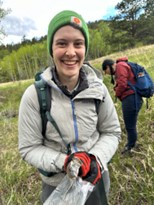
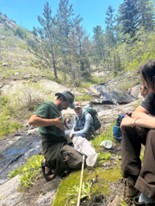
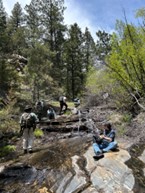
Prairie Dog Trapping, Arizona Game and Fish
I was able to travel to Seligman, AZ to help Arizona Game and Fish’s Black Footed Ferret crew with prairie dog trapping. I was excited about this project because I hope to focus on small mammals in my conservation career! The crew has a long-term trapping project which compares different methods of treating prairie dog colonies for plague. The process started in the evenings, when we would head out to the colonies to bait and set traps. We hoped for good results, however sometimes horses and cattle got to the traps before the prairie dogs did. In the morning, we checked the traps and loaded any trapped prairie dogs into the truck to bring back to the processing station. I learned to sedate the prairie dogs so that we could flea comb, weigh, and measure the prairie dogs, as well as collecting blood samples and giving them ear tags. We used ear tags to identify recaptured individuals from earlier days or years. It took a few hours to process all of the individuals we caught. Afterwards, we would return them to their burrows and head out to conduct flea treatments or map burrows. It was hard and rewarding work and I would love to work with prairie dogs again.
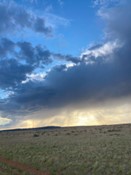
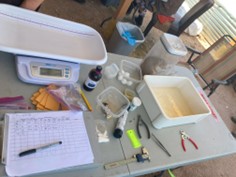

Summary
I am so glad I was able to take part in the CNHP internship this summer! I am especially excited about the small mammal research techniques I learned. After this summer, I am more confident about all of my field skills, from plant identification to camping. I am looking forward to working in the field more in my career!




